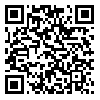BibTeX | RIS | EndNote | Medlars | ProCite | Reference Manager | RefWorks
Send citation to:
URL: http://mjiri.iums.ac.ir/article-1-4297-en.html
Background: Addiction is a serious concern in workplaces, as it can lead to accidents, absenteeism, and loss of productivity, neglect, delay, arguing, unhappiness, production cuts, and irregular working pattern. This national survey was conducted to assess the prevalence and pattern of drug use among employees of industrial environments in Iran.
Methods: In this cross sectional study, the sample size was determined to be 13489 using multistage cluster sampling method during November 2013 and November 2014. Data were collected by trained interviewers using a structured questionnaire developed by the research team. Urine drug test was done for participants using laboratory rapid kits. A total of 13 286 questionnaires were completed with remarkable responsiveness such that only 1.2% of them were excluded due to defects in urine drug tests, and the rest were analyzed after the review.
Results: The response rate to the questionnaires was 98.4% and 13 128 individuals took the urinary drug test. Many participants who had positive urine test did not express drug use and positive tests were more than self-reported cases. Compared to information about the pattern of drug use, data on the estimated prevalence of drug use was more reliable.
Conclusion: This study presents the protocol of a well-designed national survey, including sampling procedure, appropriate instrument and test, field work, and discussion on the strengths and limitations of the study, and thus its results can be used effectively by policymakers.
| Rights and permissions | |
 |
This work is licensed under a Creative Commons Attribution-NonCommercial 4.0 International License. |








